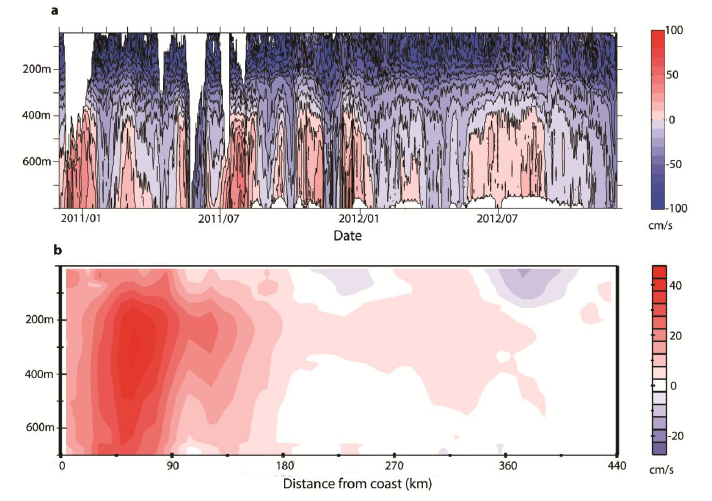On June 18, 2015, the review paper “Pacific western boundary currents and their roles in climate” is published in Nature, which is led by Academician HU Dunxin from Institute of Oceanology, Chinese Academy of Sciences, with 17 scientists in oceanographic and climatological communities from different countries. This is the first review paper in Nature on the topic of the Pacific Ocean circulation and climate, and is also the first review paper published in Nature by Chinese oceanographers.
Invited by Nature, HU Dunxin, WU Lixin, CAI Wenju, et al. took 18 months to carve this 5000-word paper out, which turns out to be authoritative and influential. It synthesizes what has been learned and points out what remains to be resolved. Pacific Western Boundary Currents (WBCs) are strong oceanic flows which modulate the regional and global climate through their heat advections and interaction with the atmosphere. Their variations could make an influence on the largest warm water mass in the global ocean - Western Pacific Warm Pool, and hence ENSO cycle and global climate. The warm pool variations could also affect the East Asian Monsoon and floods/droughts in China by changing the atmosphere circulation. Therefore, studies on the Pacific WBCs are particularly important.
This article points out the importance of the Pacific WBCs in the global ocean and climate system, and summarizes that several important scientific findings based on in-situ observations in the western Pacific over the past 20 years: New Guinea Coastal Undercurrent, Mindanao Undercurrent, Luzon Undercurrent, North Equatorial Undercurrent, and New Ireland Coastal Undercurrent. The discovery of these undercurrents alters our conventional understanding of the structure of the Pacific WBCs.
It also presents some recent progress on the relationship between the Pacific WBCs and the climate. The influence of the WBCs variation on the climate change (El Nino/La Nina), especially, the southward shift of the NEC/SEC bifurcations over the past 60 years strongly affects the climate over the Pacific by changing the heat advection of the WBCs. Besides, under global warming, the Pacific WBCs variations directly influence the Indonesian Throughflow (ITF) and the global thermohaline circulation; Pacific WBCs could also influences the East Asian Monsoon, Australian Monsoon (e.g. South China Sea monsoon) and floods/droughts in China by changing the heat storage of the warm pool.
Fig. 1 Schematic diagram of the Pacific Ocean circulation and WBCs system
a: the upper ocean circulation; b: wind stress;
c-d: the undercurrents in the North and South Pacific Ocean

Fig. 2 Two branches of equatorward WBCs
a, Mindanao current/ Mindanao Undercurrent from mooring observations by China;
b, Profiles of New Guinea coastal undercurrent
Based on previous studies, Hu, et al. come up with a systematic analysis on the variations of different components of the Pacific WBCs system during El Nino, and emphasize that the Pacific WBCs and climate over the Pacific will continue to change in the coming century due to past and future emissions of greenhouse gases. The paper also identifies some important scientific topics to be investigated through future research. Coordinated efforts in observation, process study and modeling are suggested to target the above issues.
http://www.nature.com/nature/journal/v522/n7556/full/nature14504.html

